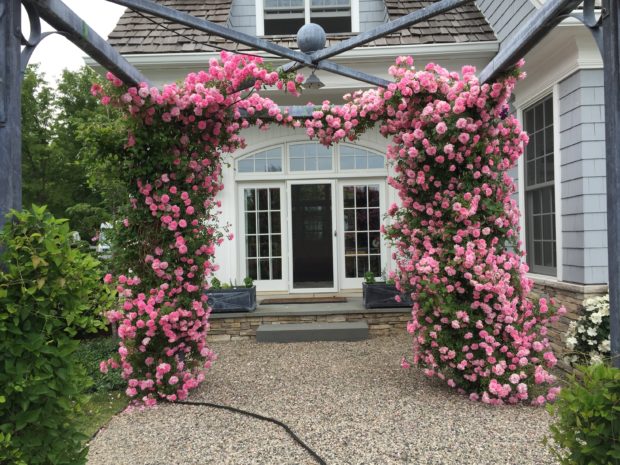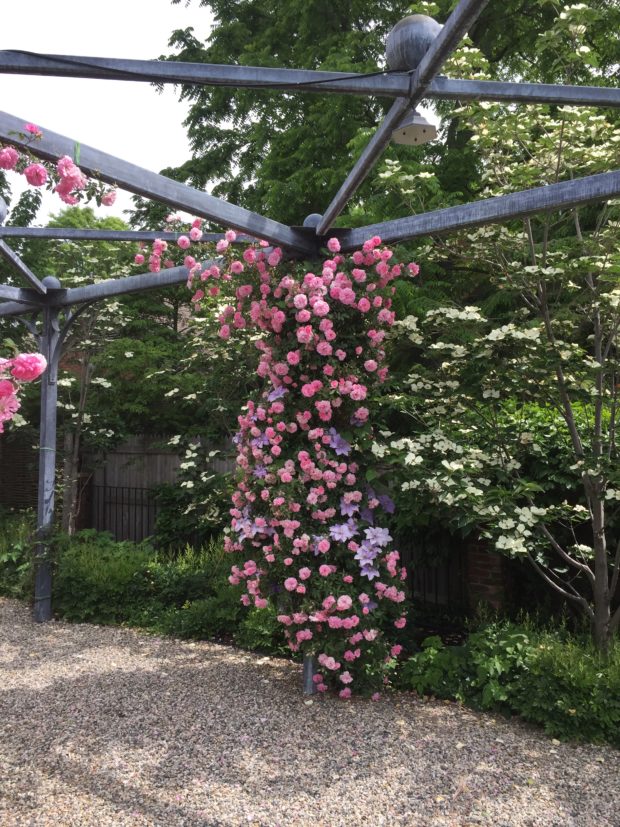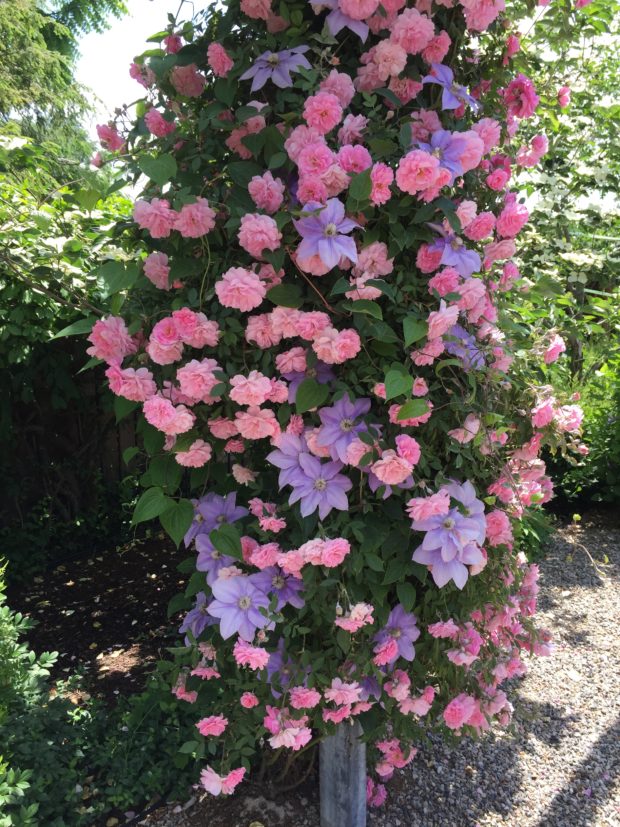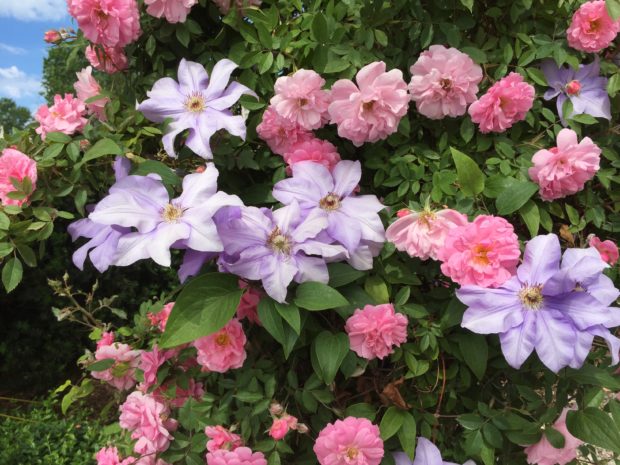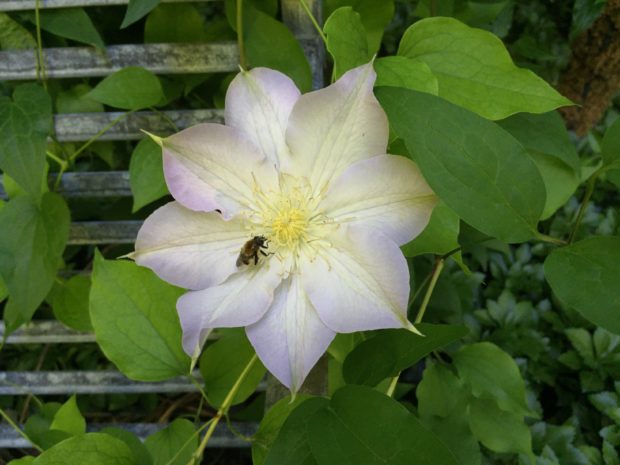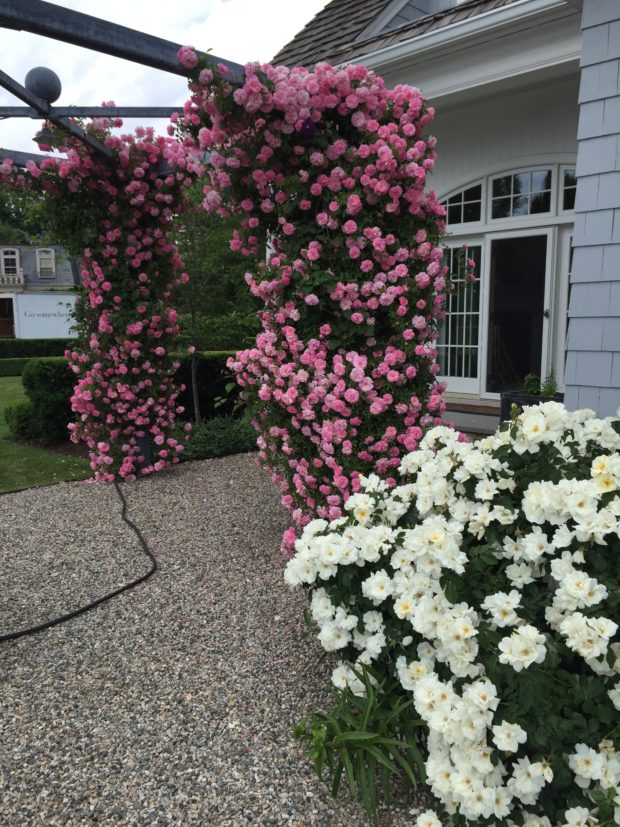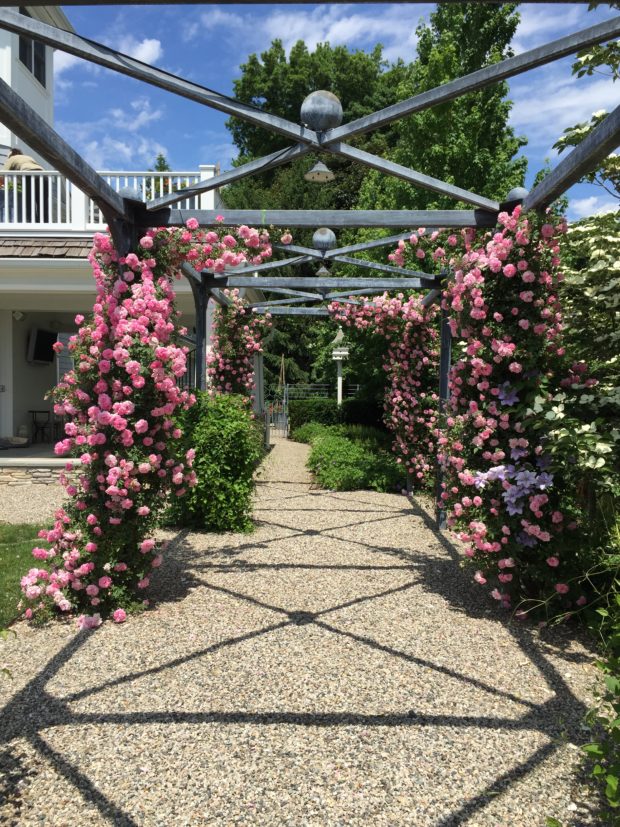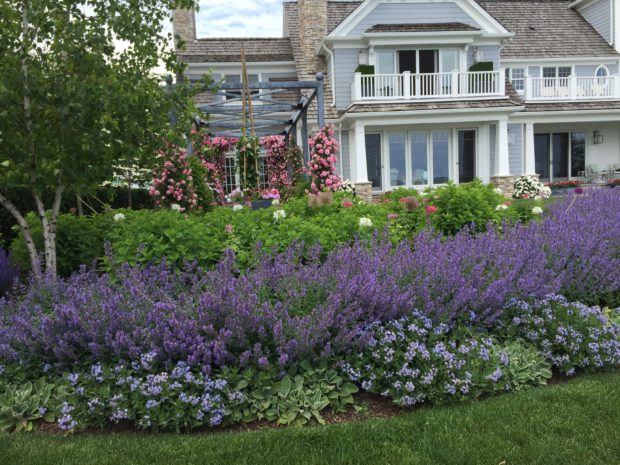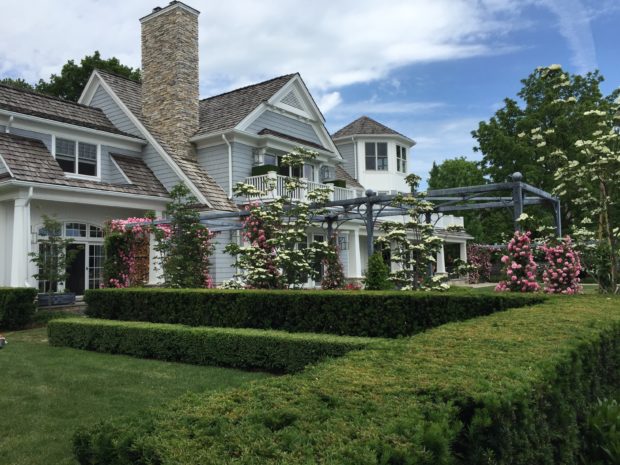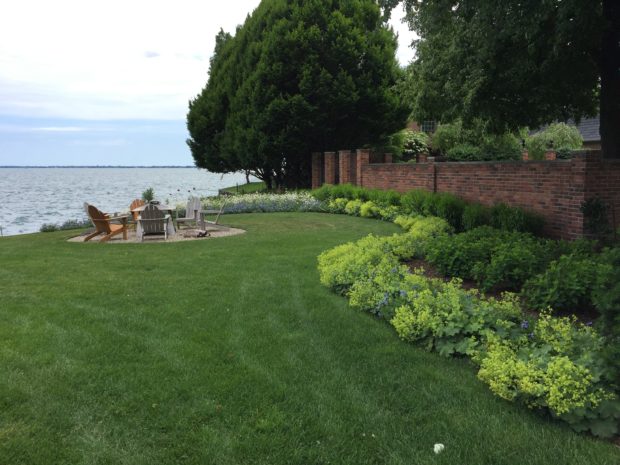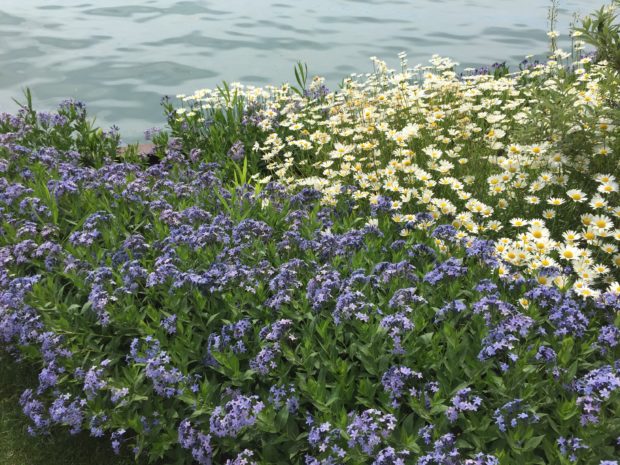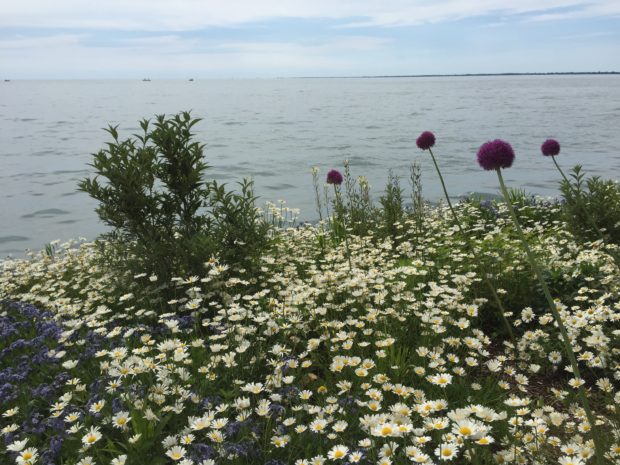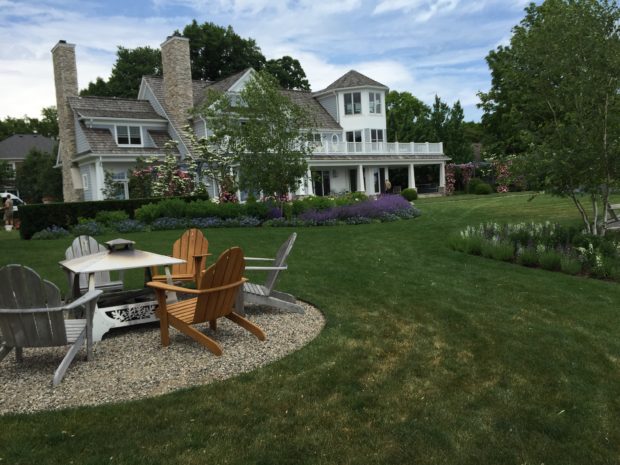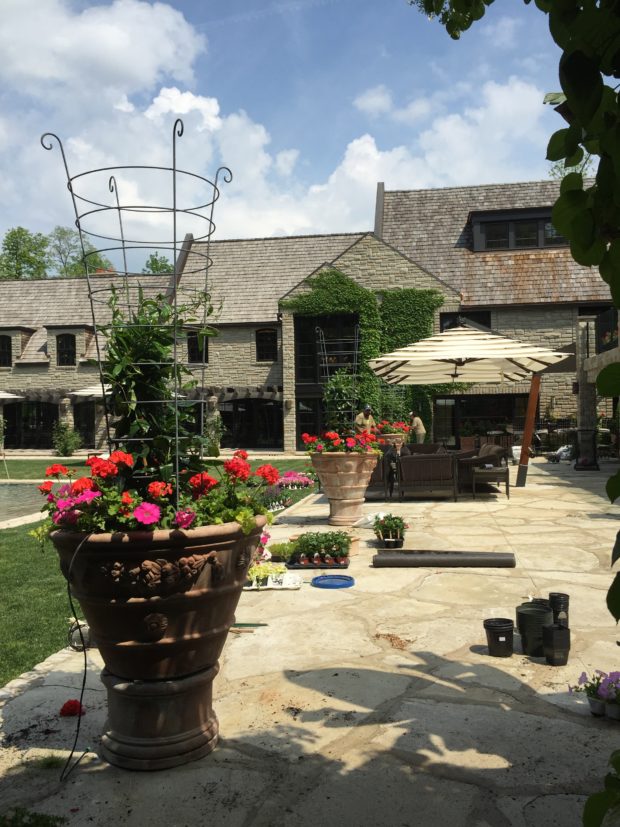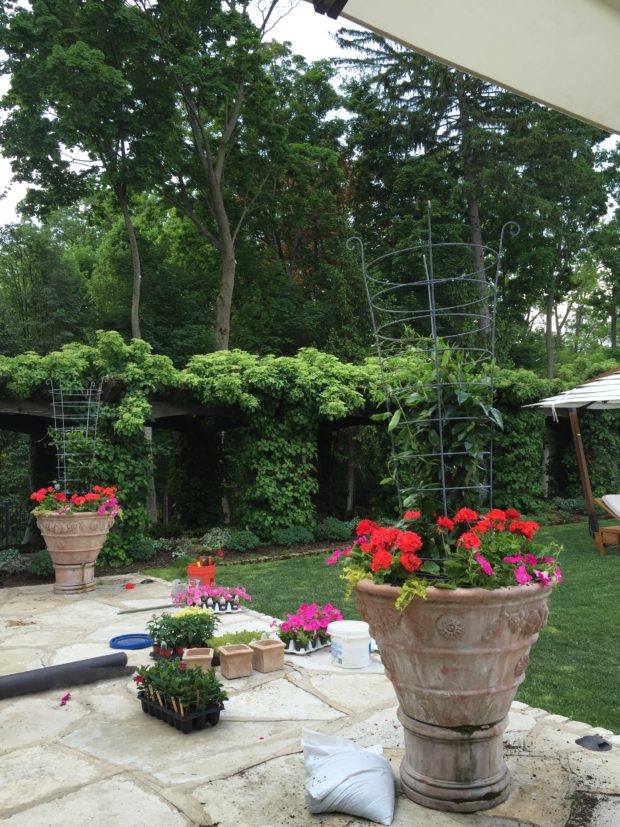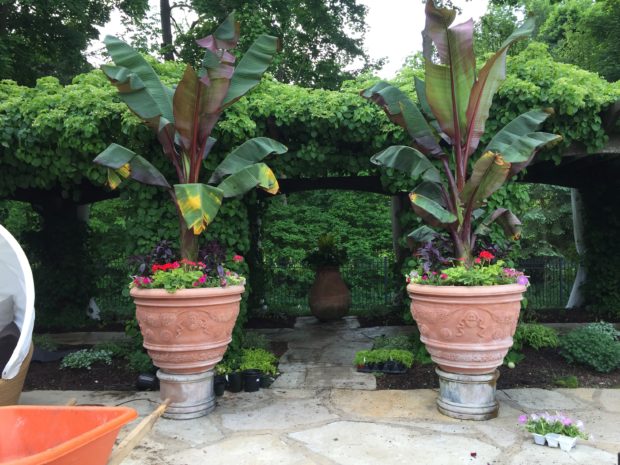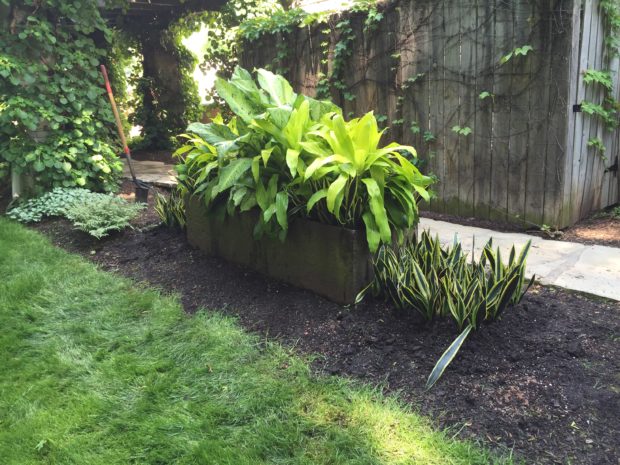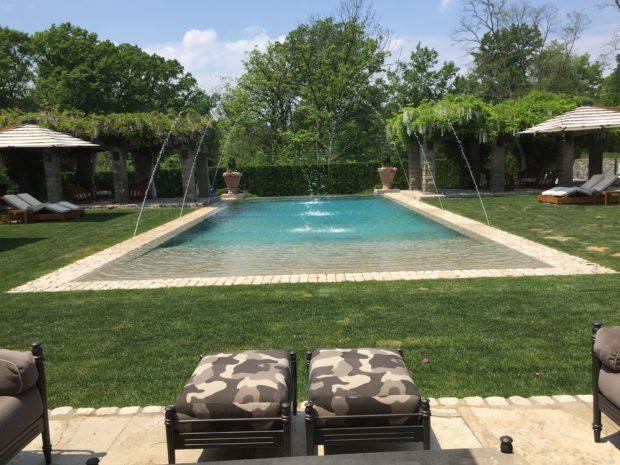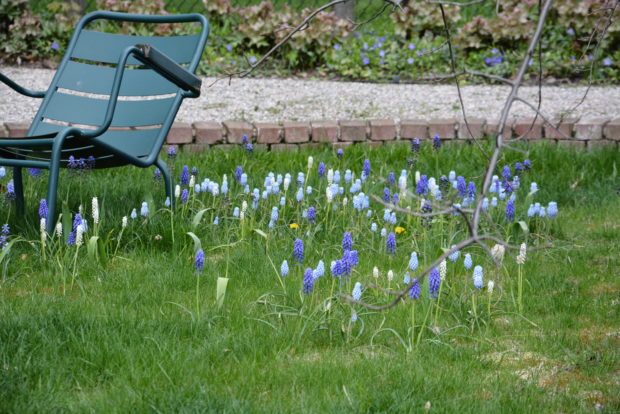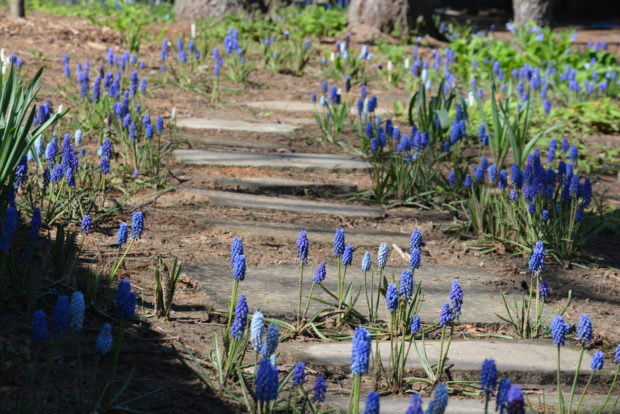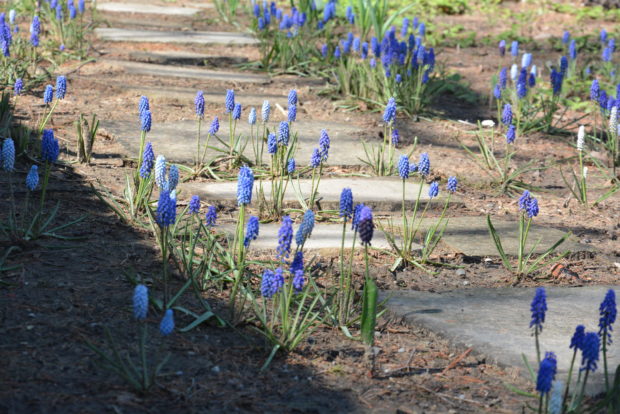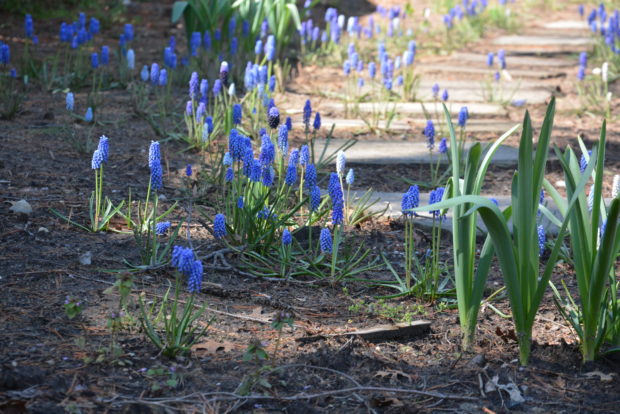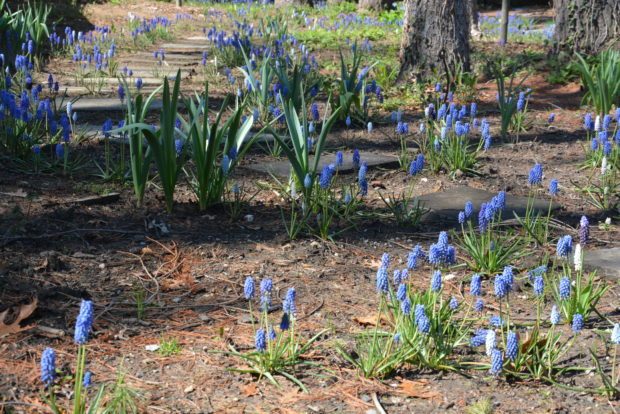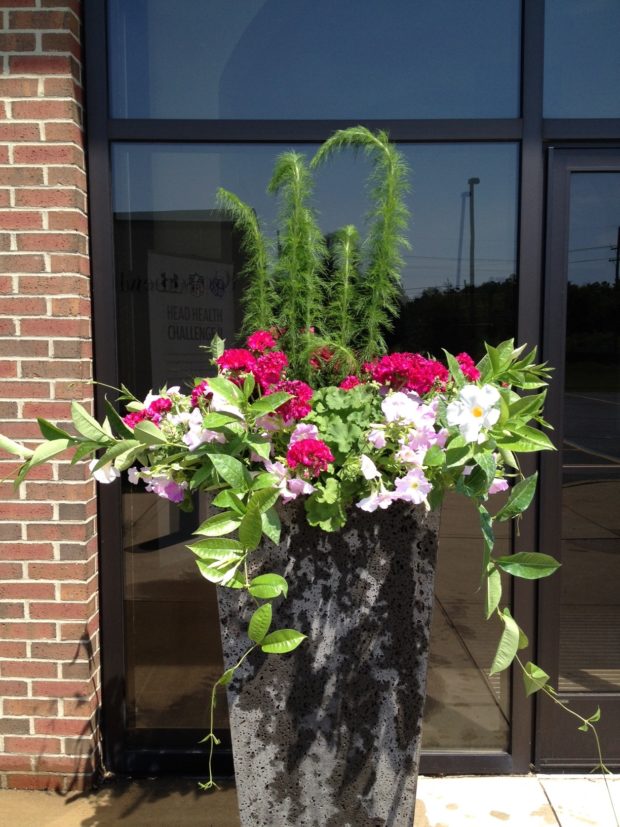 A very long run of blisteringly hot days is tough to cope with in mid June. No person or plant is ready for July weather this early. The elegant feather plant, a native of Texas, is wilting in this container. We have lots of seasonal and annual plants in small containers at Detroit Garden Works. Windy weather in the 90’s means those pots on the first bench dry out before the last bench gets watered. Rob and Amanda have been on the business end of the hoses non stop for days. When I turned 60, I told Rob I did not want to water any more. But I watered today. Patty Watkins, co-owner and waterer in chief at Bogie Lake Greenhouse, is ready to turn over her hose to her daughter Jessie. Patty is just about the kindest, most friendly, most helpful, and most even tempered person on the planet. If you shop at Bogie Lake, you know this. But the heat in her greenhouses is taking its toll. She is really ready to drop that hose. I can’t imagine how she and Mark have been coping.
A very long run of blisteringly hot days is tough to cope with in mid June. No person or plant is ready for July weather this early. The elegant feather plant, a native of Texas, is wilting in this container. We have lots of seasonal and annual plants in small containers at Detroit Garden Works. Windy weather in the 90’s means those pots on the first bench dry out before the last bench gets watered. Rob and Amanda have been on the business end of the hoses non stop for days. When I turned 60, I told Rob I did not want to water any more. But I watered today. Patty Watkins, co-owner and waterer in chief at Bogie Lake Greenhouse, is ready to turn over her hose to her daughter Jessie. Patty is just about the kindest, most friendly, most helpful, and most even tempered person on the planet. If you shop at Bogie Lake, you know this. But the heat in her greenhouses is taking its toll. She is really ready to drop that hose. I can’t imagine how she and Mark have been coping.
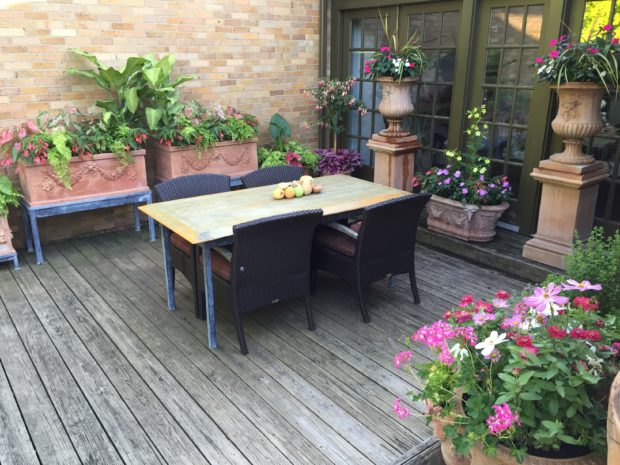 I had a landscape call this morning with a client. The three of us met at a table in the back yard at 10:30 am. The sun was scorching. It was a relief to all of us when the plan review was done. Sitting in the sun when it is 93 degrees is unpleasant to say the least. In the car on the way home, the air conditioning blasting, I was thinking about the sun. The light of the sun reaches earth via radiation. That light is translated into heat. I am hazy on the science, but I do know a shady spot out of the sun makes heat much more tolerable.
I had a landscape call this morning with a client. The three of us met at a table in the back yard at 10:30 am. The sun was scorching. It was a relief to all of us when the plan review was done. Sitting in the sun when it is 93 degrees is unpleasant to say the least. In the car on the way home, the air conditioning blasting, I was thinking about the sun. The light of the sun reaches earth via radiation. That light is translated into heat. I am hazy on the science, but I do know a shady spot out of the sun makes heat much more tolerable.
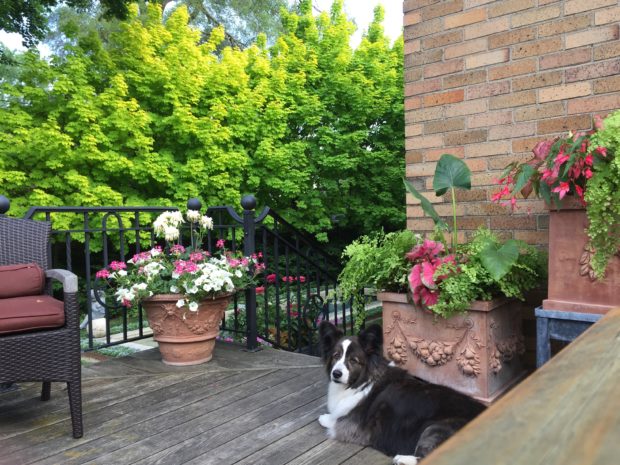 It is astonishing that the sun, some 93 million miles from earth, can send any gardener running for cover. How heat affects people is well known. Last week’s container plantings and landscape work made for a busy week. Hot weather we take precautions. We may start work early, and quit before 3pm. Or we schedule the hot spots in the morning, and the shadier work in the afternoon.
It is astonishing that the sun, some 93 million miles from earth, can send any gardener running for cover. How heat affects people is well known. Last week’s container plantings and landscape work made for a busy week. Hot weather we take precautions. We may start work early, and quit before 3pm. Or we schedule the hot spots in the morning, and the shadier work in the afternoon.
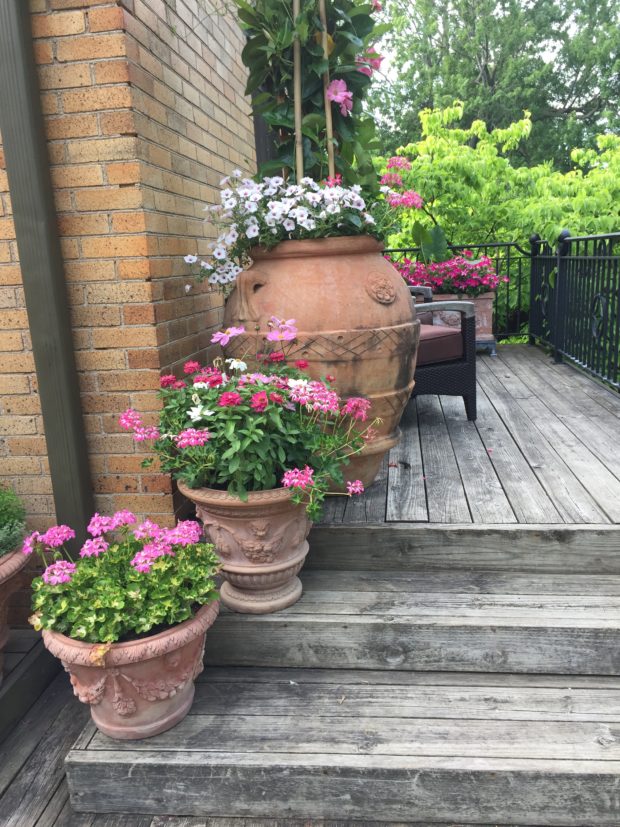 When the weather is incredibly hot, it is important to understand how that heat affects plants. Tropical and seasonal plants originate in climates known for very hot weather. My containers at home were planted only a week ago. I know they have not rooted into the surrounding soil yet. Though tropical and seasonal plants have an incredible capacity to thrive in high heat, that capacity implies a root system that is well established. The short story? I am watering every day.
When the weather is incredibly hot, it is important to understand how that heat affects plants. Tropical and seasonal plants originate in climates known for very hot weather. My containers at home were planted only a week ago. I know they have not rooted into the surrounding soil yet. Though tropical and seasonal plants have an incredible capacity to thrive in high heat, that capacity implies a root system that is well established. The short story? I am watering every day.
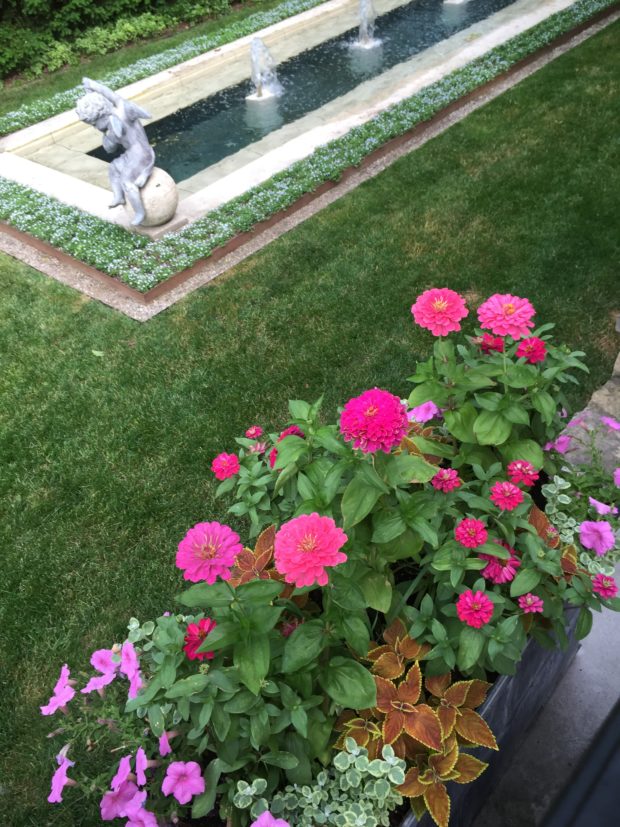 The container in the foreground featuring zinnias, petunias and variegated licorice will be happy with a hot and dry summer, once the plants are established. Other heat loving plants include mandevillea, ageratum, trailing verbena and lantana. Lavender and rosemary, and other plants with needle like foliage are uniquely positioned to tolerate heat. Their leaves have very little surface area exposed to the desiccating effects of heat and wind. My butterburrs, on the other hand, with their giant thin leaves, will wilt at the first sign of high heat. Dahlias will react similarly. I did replant isotoma around the fountain. A tuneup to the irrigation means I will be able to give them the water they need. The Princeton Gold maples provide them with a little afternoon shade.
The container in the foreground featuring zinnias, petunias and variegated licorice will be happy with a hot and dry summer, once the plants are established. Other heat loving plants include mandevillea, ageratum, trailing verbena and lantana. Lavender and rosemary, and other plants with needle like foliage are uniquely positioned to tolerate heat. Their leaves have very little surface area exposed to the desiccating effects of heat and wind. My butterburrs, on the other hand, with their giant thin leaves, will wilt at the first sign of high heat. Dahlias will react similarly. I did replant isotoma around the fountain. A tuneup to the irrigation means I will be able to give them the water they need. The Princeton Gold maples provide them with a little afternoon shade.
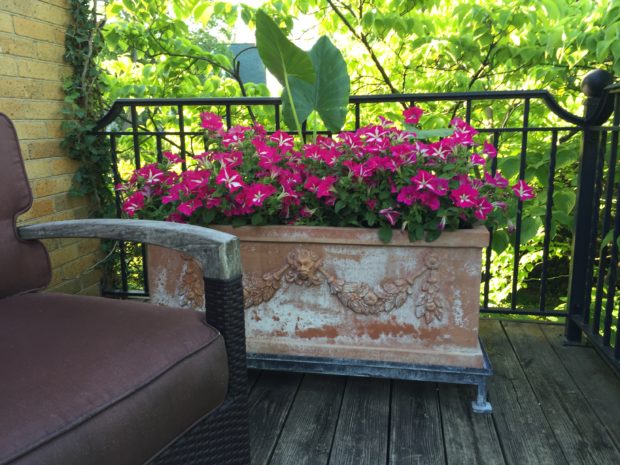 I planted my containers at home based on a prediction by the National Weather Service for a summer season that would be very hot and dry. And a request from Buck for “big leaves”. I have never been much of a fan of alocasias myself, the byproduct of which is that I have never grown them. It will be interesting to see how they do. I did locate them in areas where they have bright light, and not so much sun.
I planted my containers at home based on a prediction by the National Weather Service for a summer season that would be very hot and dry. And a request from Buck for “big leaves”. I have never been much of a fan of alocasias myself, the byproduct of which is that I have never grown them. It will be interesting to see how they do. I did locate them in areas where they have bright light, and not so much sun.
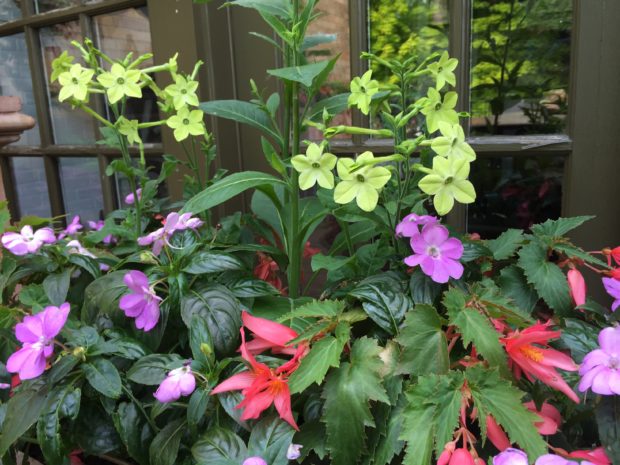 This container always has lime nicotiana. Both the attending New Guinea impatiens and begonias will be fussy in the heat. I always water rot prone plants at the soil line, and avoid getting the leaves wet. I only water when they are dry, and not when the air temperature is high. I do not give my plants a cool shower. Though I may find that a good idea on a hot day, what I like is not necessarily what my plants like. They need moisture in the soil to thrive. Moisture in the air is another word for humidity. Humidity can foster mildew and other fungal problems.
This container always has lime nicotiana. Both the attending New Guinea impatiens and begonias will be fussy in the heat. I always water rot prone plants at the soil line, and avoid getting the leaves wet. I only water when they are dry, and not when the air temperature is high. I do not give my plants a cool shower. Though I may find that a good idea on a hot day, what I like is not necessarily what my plants like. They need moisture in the soil to thrive. Moisture in the air is another word for humidity. Humidity can foster mildew and other fungal problems.
 No seasonal plant thrives in great heat more than caladiums. This dwarf pink variety with a green edge is beautiful. The maiden hair fern you see is not a hardy variety. It is a tropical variety which will handle our heat, given sufficient water. I do recall a summer in the 1980’s with incredibly high temperatures and little rain. A nursery we dealt with in Lake County in Ohio lost thousands of rhododendron and Japanese maples. The soil temperature was so high that the plants perished.
No seasonal plant thrives in great heat more than caladiums. This dwarf pink variety with a green edge is beautiful. The maiden hair fern you see is not a hardy variety. It is a tropical variety which will handle our heat, given sufficient water. I do recall a summer in the 1980’s with incredibly high temperatures and little rain. A nursery we dealt with in Lake County in Ohio lost thousands of rhododendron and Japanese maples. The soil temperature was so high that the plants perished.
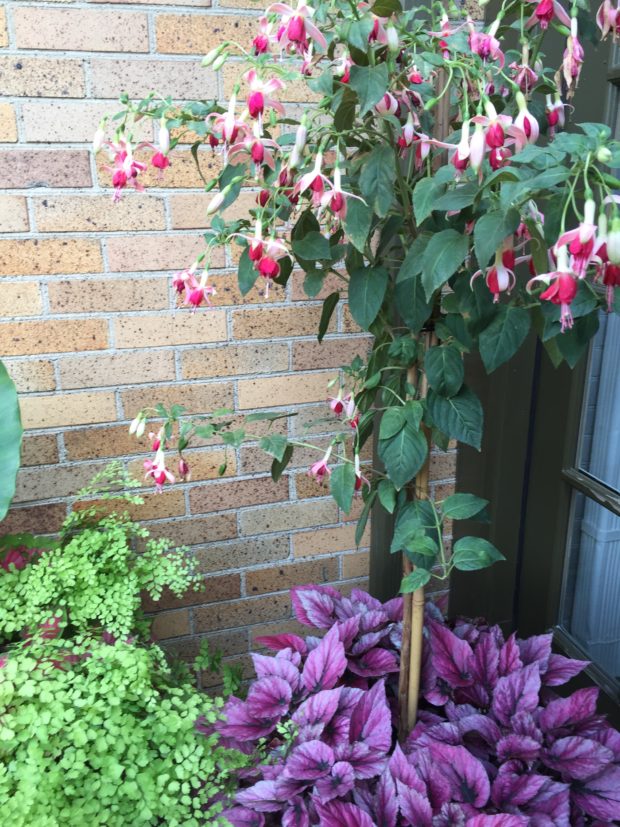 I know that fuchsia thrives in cooler conditions. I have tucked this fuchsia Ballerina standard close to the north wall, hoping that a lack of sun will keep it sufficiently cool. I have had good luck in the past growing this cultivar throughout the summer. Plants that experience higher temperatures than what they can tolerate will aestivate, or enter a mild state of dormancy as a survival mechanism. This means they will quit flowering until the heat passes.
I know that fuchsia thrives in cooler conditions. I have tucked this fuchsia Ballerina standard close to the north wall, hoping that a lack of sun will keep it sufficiently cool. I have had good luck in the past growing this cultivar throughout the summer. Plants that experience higher temperatures than what they can tolerate will aestivate, or enter a mild state of dormancy as a survival mechanism. This means they will quit flowering until the heat passes.
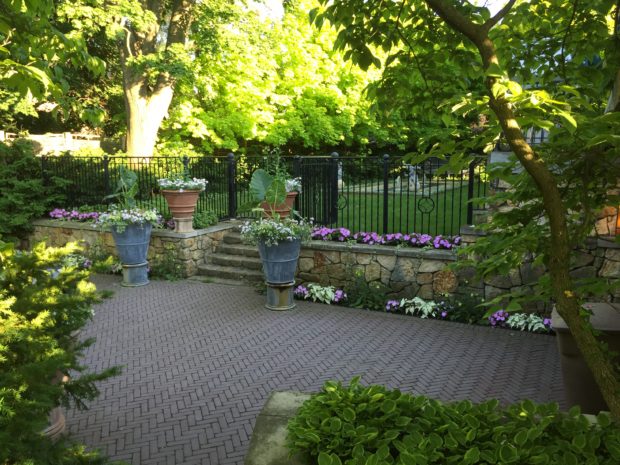 My driveway garden is sunny for a number of hours, and shady for better than a number of hours. It is a good spot for New Guinea impatiens. No seasonal plant protests dry conditions more dramatically than New Guinea impatiens. They can wilt down an hour after they have gone dry, making the foliage look like braised lettuce. I try never to let them get this dry. The stress extreme stress from lack of water is so hard on plants.
My driveway garden is sunny for a number of hours, and shady for better than a number of hours. It is a good spot for New Guinea impatiens. No seasonal plant protests dry conditions more dramatically than New Guinea impatiens. They can wilt down an hour after they have gone dry, making the foliage look like braised lettuce. I try never to let them get this dry. The stress extreme stress from lack of water is so hard on plants.
 The good part of the heat is that plants that have barely been in the ground a week are taking hold and beginning to grow.
The good part of the heat is that plants that have barely been in the ground a week are taking hold and beginning to grow.
Save
